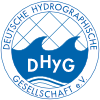The search for Malaysian Airlines flight MH370
Even today, hydrographic surveys can reach the boundaries of what is technically possible, and project sizes as presented in this case study will push our ingenuity. The size-challenge can be defined by the extent of the project area, the water depth, the number of vessels/equipment involved, the data volume or all of the above. On 8 March 2014 the Malaysian airplane MH370 scheduled on a flight from Kuala Lumpur to Bejing with 239 people on-board went missing. This tragedy started a marine search and rescue mission, which turned later into the largest aircraft accident investigation in history. This case study presents a summary of the underwater search of this investigation. The mainly uncharted search area in the southern Indian Ocean of 120,000 square kilometres reaches water depths of up to 6,000 metres. The operation was planned in three phases: a deepwater multibeam survey to map the seafloor and enable a detailed search, the detailed survey to find the aircraft, and at last a recovery survey.
aircraft search | ultra-deep survey | deep-tow system | Indian Ocean


